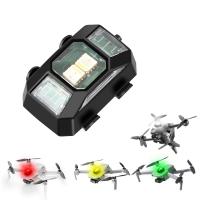How To Use Telescope?
Using a telescope can be an incredibly rewarding experience, allowing you to explore the night sky and observe celestial objects in detail. However, for beginners, the process can seem daunting. This article aims to provide a comprehensive guide on how to use a telescope, covering everything from choosing the right telescope to setting it up and making your first observations.
Choosing the Right Telescope

Before you can start using a telescope, you need to choose one that suits your needs. Telescopes come in various types, including refractors, reflectors, and compound telescopes. Each type has its own advantages and disadvantages.
1. Refractor Telescopes: These use lenses to gather and focus light. They are generally easy to use and require little maintenance. They are ideal for viewing planets and the moon but can be expensive for larger apertures.
2. Reflector Telescopes: These use mirrors instead of lenses. They are usually more affordable for larger apertures and are excellent for deep-sky observations. However, they require regular maintenance, such as collimation.
3. Compound Telescopes: These combine lenses and mirrors to offer a compact design. They are versatile and good for both planetary and deep-sky observations but can be more expensive.
Setting Up Your Telescope

Once you have chosen your telescope, the next step is to set it up. Here are the general steps:
1. Find a Suitable Location: Choose a location with minimal light pollution and a clear view of the sky. Your backyard or a nearby park can be good options.
2. Assemble the Telescope: Follow the manufacturer’s instructions to assemble your telescope. This usually involves attaching the optical tube to the mount and setting up the tripod.
3. Align the Finderscope: The finderscope is a small telescope attached to the main telescope that helps you locate objects. Point the main telescope at a distant object during the day, such as a tree or a building, and adjust the finderscope until the object is centered in both the finderscope and the main telescope.
4. Balance the Telescope: If you are using an equatorial mount, you will need to balance the telescope. This involves adjusting the counterweights so that the telescope remains stable when you move it.
Polar Alignment (For Equatorial Mounts)

If you are using an equatorial mount, you will need to perform a polar alignment. This aligns the telescope with the Earth’s rotational axis, making it easier to track celestial objects.
1. Locate Polaris: Polaris, the North Star, is located near the North Celestial Pole. Use a star chart or a smartphone app to find it.
2. Adjust the Mount: Use the mount’s altitude and azimuth controls to point the telescope at Polaris. This will align the mount with the Earth’s axis.
Making Your First Observations

With your telescope set up and aligned, you are ready to start observing. Here are some tips for making your first observations:
1. Start with the Moon: The moon is a great first target because it is bright and easy to find. Use a low-power eyepiece to get a wide view, and then switch to a higher-power eyepiece for more detail.
2. Move to Planets: After the moon, try observing planets like Jupiter and Saturn. These are also relatively bright and easy to find. Look for Jupiter’s moons and Saturn’s rings.
3. Explore Deep-Sky Objects: Once you are comfortable with the moon and planets, try finding some deep-sky objects like star clusters, nebulae, and galaxies. Use a star chart or a smartphone app to help you locate them.
Tips for Better Observations
1. Use a Red Flashlight: A red flashlight will help you see in the dark without ruining your night vision.
2. Allow Your Eyes to Adjust: It takes about 20-30 minutes for your eyes to fully adjust to the dark. Avoid looking at bright lights during this time.
3. Be Patient: Observing celestial objects can take time and practice. Don’t get discouraged if you don’t see everything right away.
4. Keep a Log: Keeping a log of your observations can help you track your progress and remember what you have seen.
Troubleshooting Common Issues
1. Blurry Images: If your images are blurry, make sure your telescope is properly focused. You may also need to let your telescope cool down to the outside temperature.
2. Can’t Find Objects: If you are having trouble finding objects, make sure your finderscope is properly aligned. You can also use a star chart or a smartphone app to help you locate objects.
3. Telescope Won’t Stay in Position: If your telescope won’t stay in position, make sure it is properly balanced and that all the locks and clamps are tightened.
Maintenance and Care
Taking care of your telescope is important to ensure it lasts a long time and continues to provide good views.
1. Keep It Clean: Dust and dirt can affect the performance of your telescope. Use a soft brush or a can of compressed air to clean the lenses and mirrors.
2. Store It Properly: When not in use, store your telescope in a dry, cool place. Use a dust cover to protect it from dust and dirt.
3. Check for Damage: Regularly check your telescope for any signs of damage, such as cracks or loose parts. Address any issues promptly to prevent further damage.
Using a telescope can open up a whole new world of exploration and discovery. By choosing the right telescope, setting it up correctly, and following some basic tips and guidelines, you can enjoy the wonders of the night sky. Remember to be patient and take your time to learn and practice. Happy stargazing!




















There are no comments for this blog.